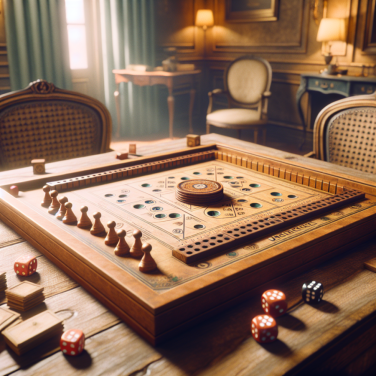Tracing the Roots: Ancient Beginnings of Soccer
Soccer, as it is known today, is universally recognized and celebrated, but the roots of this widely popular sport trace back to ancient civilizations. Soccer's ancestry can be traced back to a multitude of cultures and ages, arising independently in various parts of the world. Some of the earliest forms of the game were vastly different from modern soccer, yet they contributed significantly to the sport's evolution.
The earliest known form of a soccer-like game can be traced back to China around 2nd century B.C. During the Han dynasty, a sport named "Tsu' Chu," or "kicking ball," was popular. Besides kicking the balled leather object into a net, players could use any body part except hands to propel the ball. This set the foundation for a critical soccer rule that exists even today.
In ancient Greece, a game called "Episkyros," bear a faint resemblance to modern soccer. This sport, depicted on Greek vases, included teams that would try to throw or kick a ball across a marked line. Greek colonists later brought this game to Italy, where the Romans modified it, giving birth to "Harpastum." This Roman rendition, characterized by violent and brutal gameplay, was a far cry from today's soccer but nevertheless contributed to the evolution of team sports.
The roots of soccer can also be traced back to Mesoamerican cultures. They played a ball game known as "Pok-a-tok," which often featured in religious rituals. Some depictions of this game show players using their hips, thighs, or chests to keep the ball in motion, a common feature in modern soccer. The game held substantial social and religious significance, interweaving itself into the fabric of Mesoamerican culture, exemplifying the profound societal impact soccer would come to have globally.
The game's dynamics differed significantly in ancient Japan, where a sport called "Kemari" evolved. Unlike the competitive nature of its counterparts, Kemari focused on cooperation among players to keep the ball aloft without letting it touch the ground. Albeit dissimilar to today's competitive soccer, Kemari showcased the element of ball control.
Medieval football emerged in England around the 9th century. These games were typically chaotic, played during festivals or celebrations, with virtually no rules. Nevertheless, these chaotic beginnings eventually led to a standardized sport, setting the stage for modern soccer.
Read also:
The Thrill of the Game: Exploring Different Types of Recreational Competitions
Evolution and Formalization: The Modern Invention of Soccer
Soccer, like all timeless sport games, developed rather than being invented at a single point. It morphed with time, through societies and cultures encountering each other and exchanging ideas.
Going back to the medieval era, disparate forms of what could be considered soccer were played in towns and villages throughout Britain, with games often involving hundreds of players and being far more violent than the modern sport. There were no established rules, no referees and no settled conventions as to the number of players on each side. The aim was merely to carry a ball to a designated place. What really mattered was not the game itself rather than the raw display of masculinity it provided.
It was not until the nineteenth century, before the industrial revolution, that soccer began to take a form we recognize today. The game was gradually restrained and disciplined as it was integrated into the English school system. Early attempts to introduce rules in the 19th century resulted in the creation of several variations of soccer, with each school developing and adhering to its own set of rules.
These variations, together with the growing popularity of the game, led to the necessity of formalizing the rules and structuring the sport. The precursors of contemporary football codified the rules of the sport for the first time in Cambridge between 1848 and 1856 during the Cambridge Rules. Yet it was in 1863, with the creation of the Football Association (FA) in England, that the first official set of rules were laid out, defining soccer as we know it today.
The modern game of soccer emerged from a schism between two major camps. The first insisted on breaking away from the formalized Cambridge and FA rules, which inhibited handling of the ball and tripping opponents. The breakaway group formed the codification of Rugby football. They crafted a sport where players could run with the ball in their hands, leading to a more physical and high-contact game. For the second group, soccer gradually came to be defined by its opposite: a game where the foot alone propels the ball.
The split formed a breakaway pathway for the two sports. Rugby formed its discourse around being a game for gentlemen of higher classes, in contrast to soccer which was seen as a game for working classes which was spread worldwide through British colonies and trading networks. These socio-economic factors ensured that soccer grew in popularity at an unprecedented pace.




